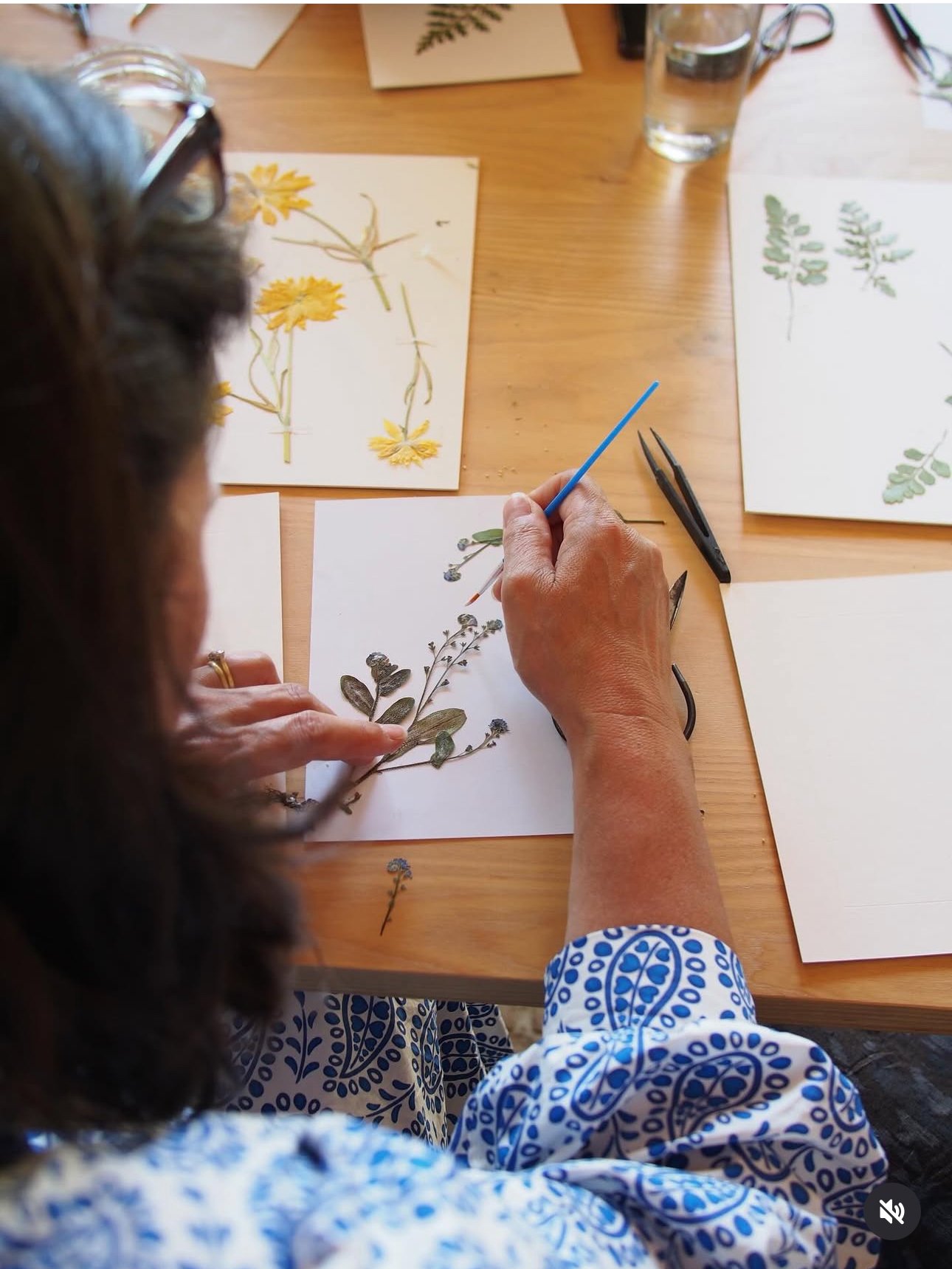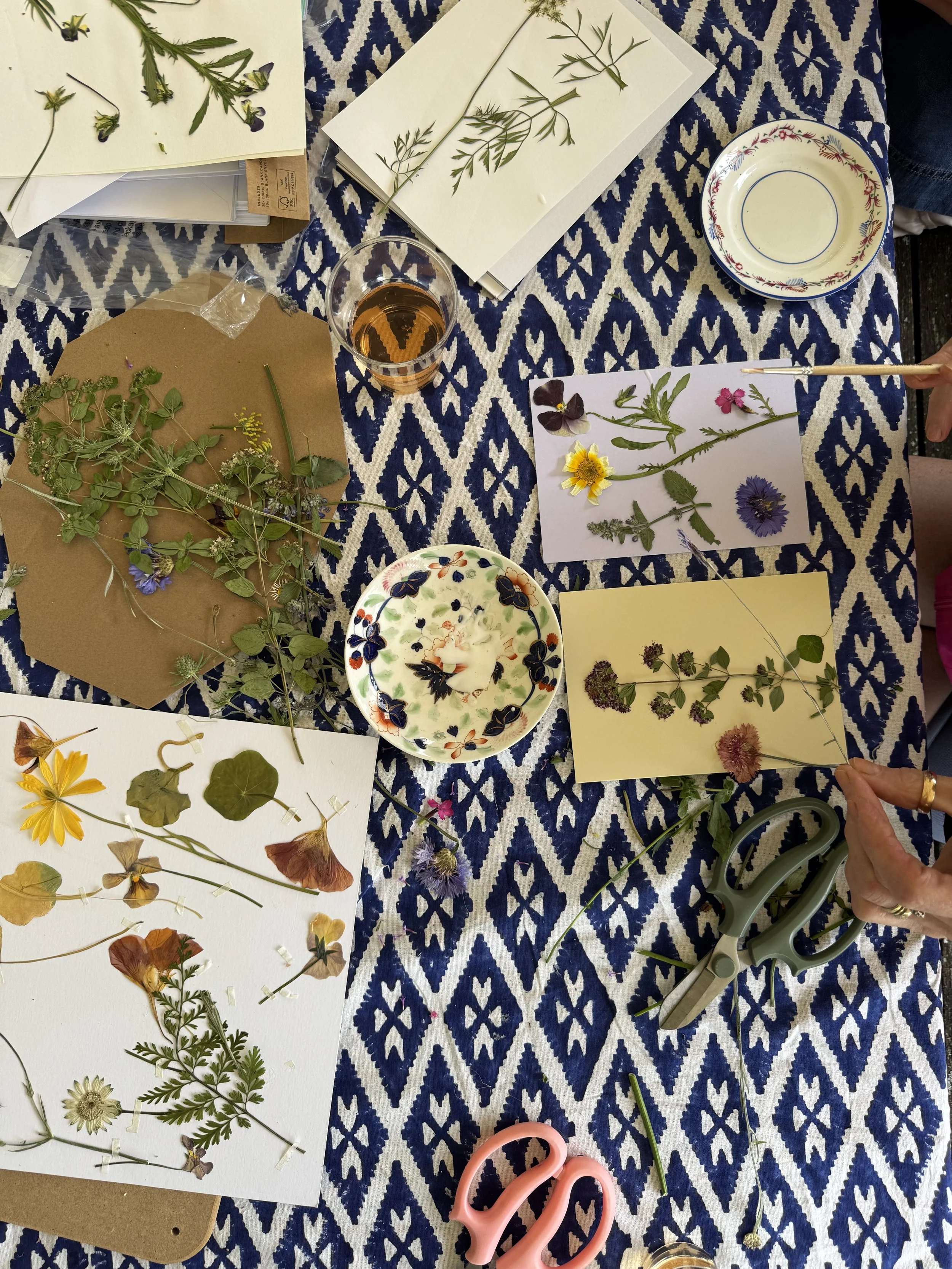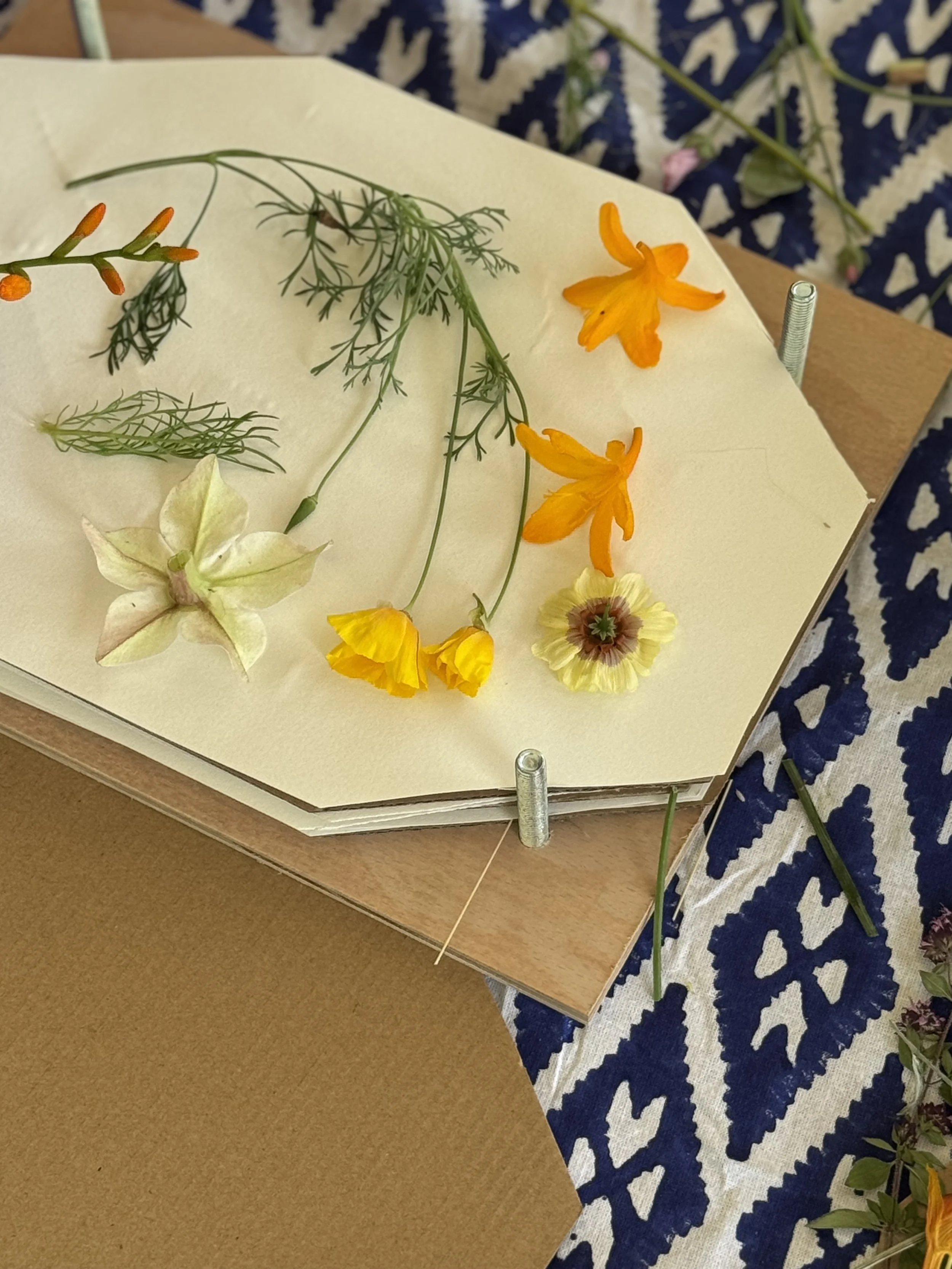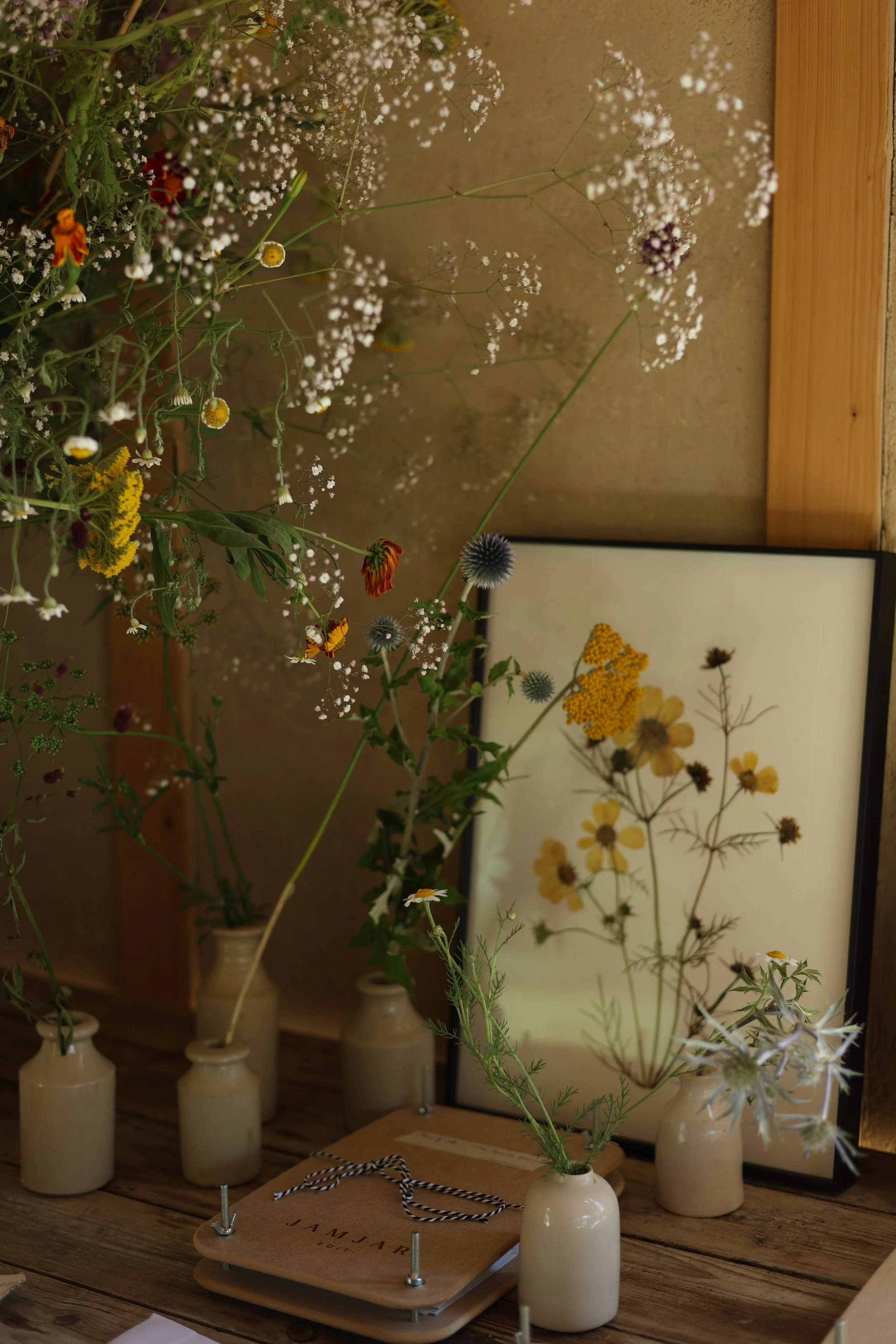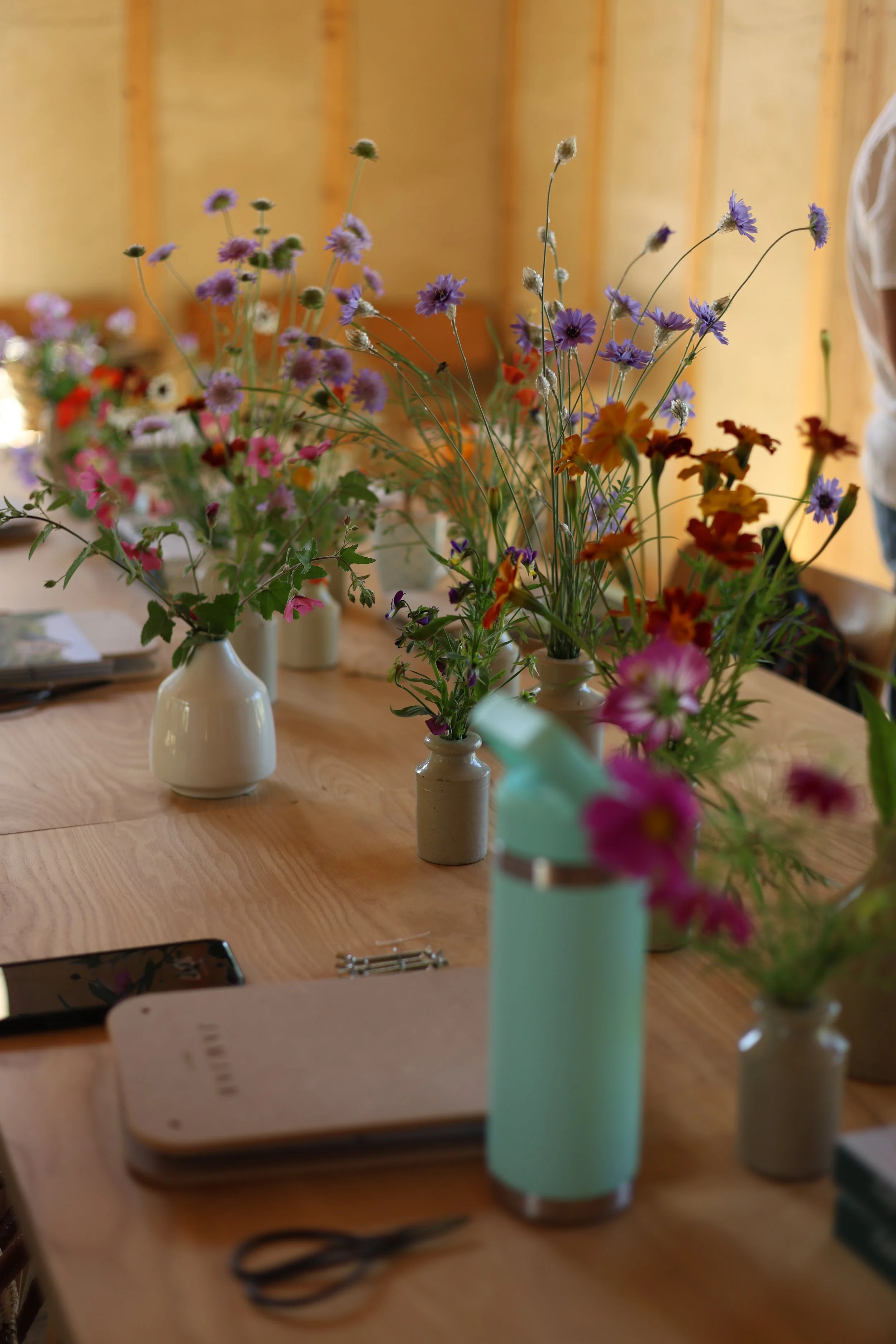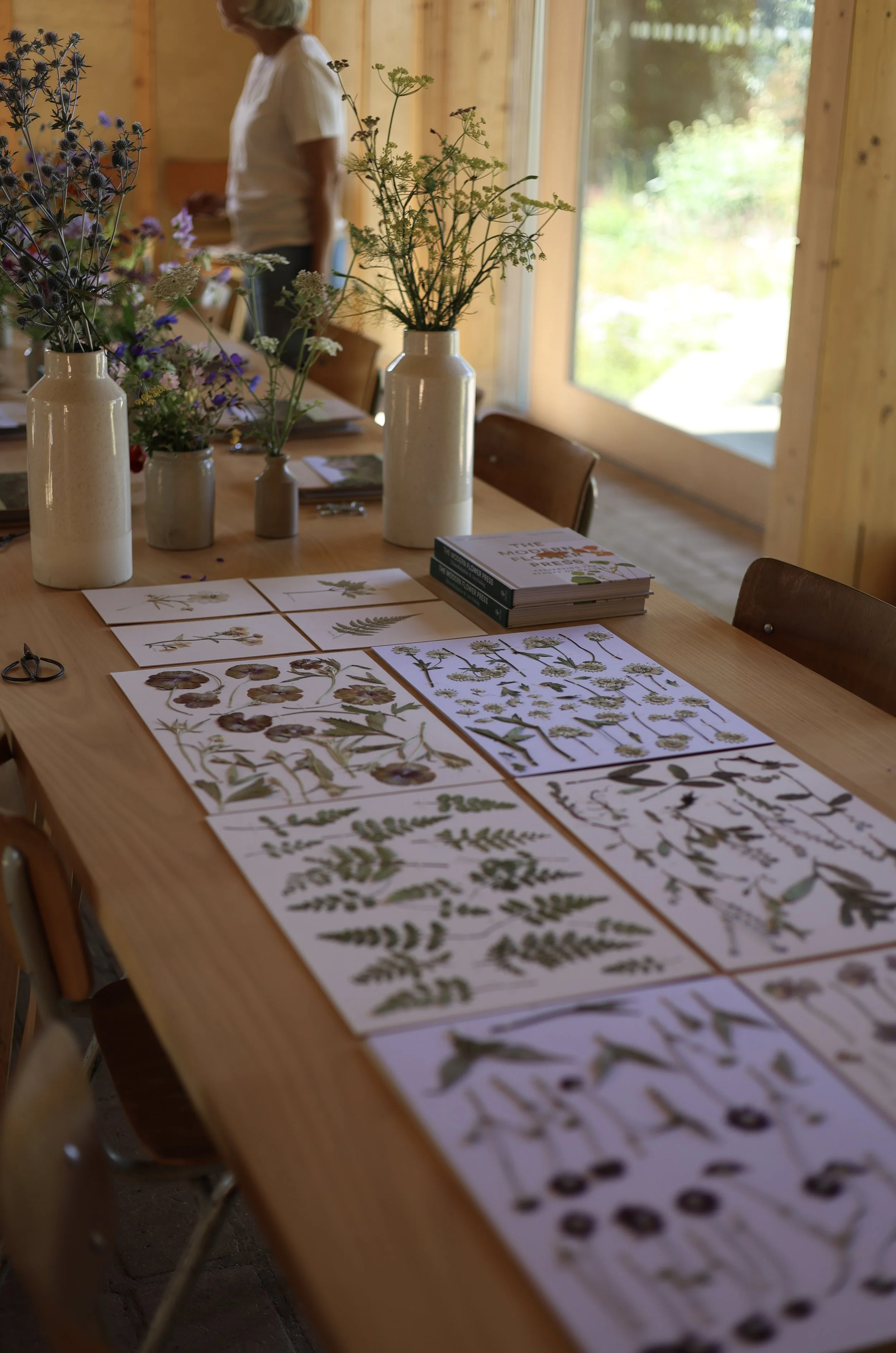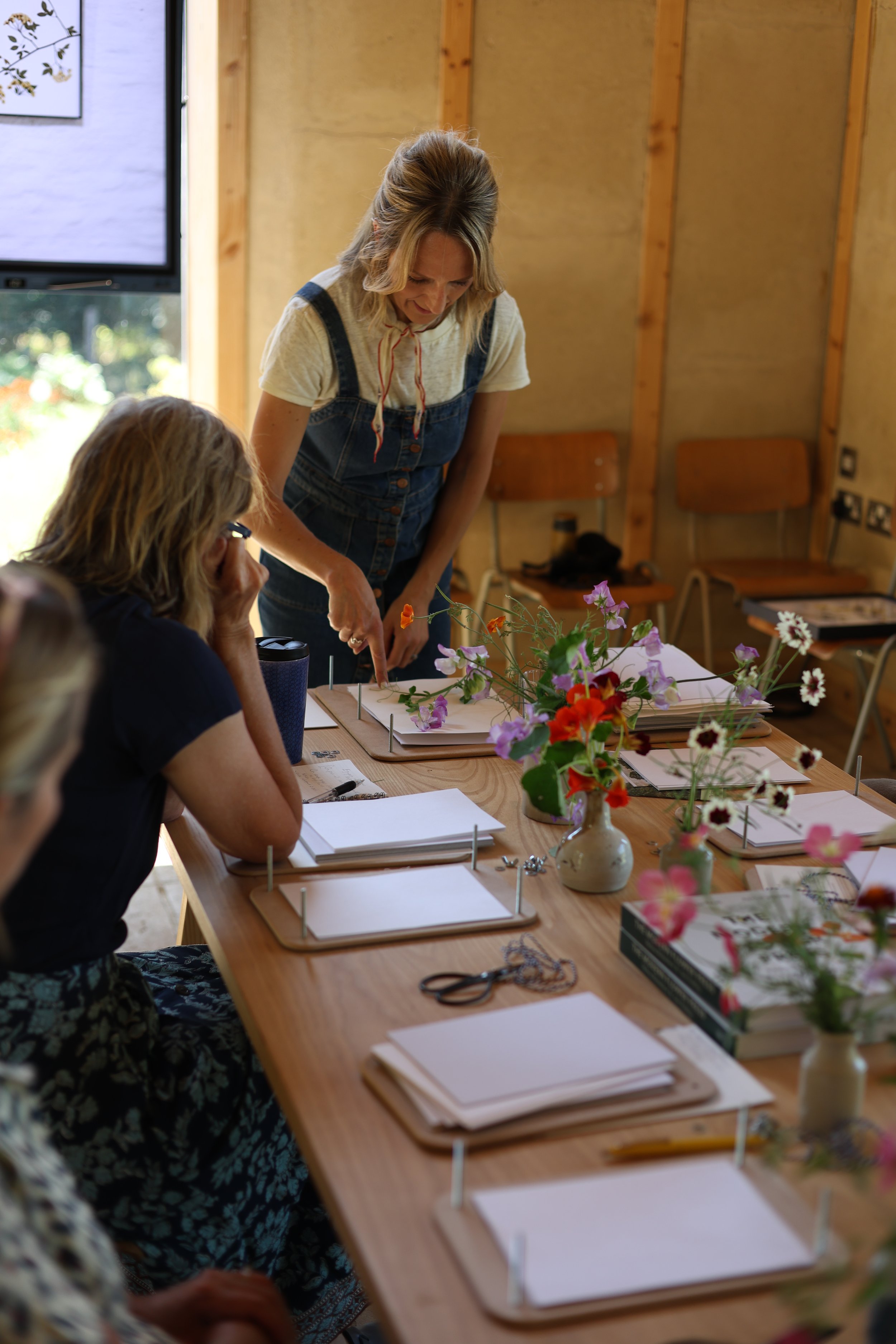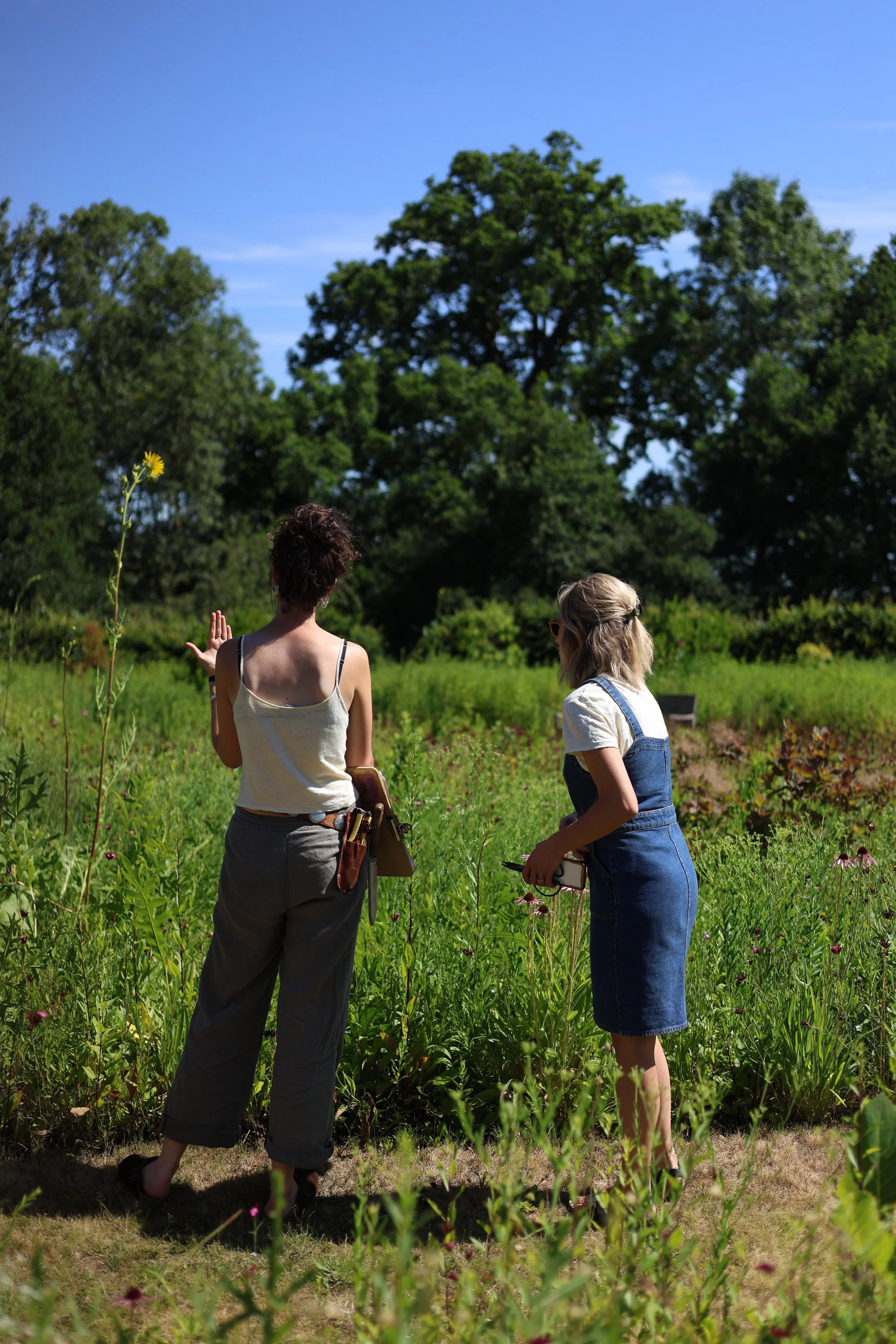Pressing Flowers: A Botanical Keepsake
Perfected by the Victorians, flower pressing has long been used to preserve nature’s fleeting beauty. In quite formal ways it has been used as a tool to record plant discoveries across the globe, or record species and differing forms of plants. It was also a way to save cherished keepsakes from gardens, wild places, and significant moments and today it still holds that same quiet magic.
Sometimes, if you’re lucky when you find an old book at a vintage market or charity shop and open the pages later at home you find a beautiful forgotten pressed flower and this whisper of someone else’s story and their little piece of floral history, tucked gently away makes you wonder - who saved it and why?
I still have my very first flower press, handmade by my brother for my tenth birthday. It’s very simple, just two pieces of plywood, four corner holes created to house long screws and wing nuts, with layers of blotting paper and cardboard inside. The words ‘flower press’ are painted in blue paint in my brother’s handwriting and it works just as well now as it did back then. The joy of pressing flowers and foliage lies in that simplicity. Cut. Layer. Wait. Remember.
A week ago, I had the enormous pleasure of attending a flower pressing workshop with Jam Jar Edit at the beautiful Serge Hill Project. It was a perfect and self indulgent day with golden sunshine overhead, good company, and a gentle rhythm that felt restorative and full of promise.
Amy Fielding and Melissa Richardson have truly reimagined flower pressing for modern times. Far from the lifeless, dusty specimens of old herbariums, their pressed flowers are full of colour, delicacy and movement with each carefully placed stem telling a story.
After a short introduction, we were led through the gardens, stopping at Emma’s beautifully planted cut flower beds (Emma Youngman @emma_youngman_grows is a very talented gardening scholar at The Serge Hill Project), through the vast wildflower meadow and the beguiling prairie garden gathering a few stems that caught our eye. The advice from Amy and Melissa was to choose delicate and intricate flowers with fine stems where possible, and not to overlook the curling tendrils and the sculptured seed pods at this time of year. This includes choosing interesting, colourful leaves and occasionally the plant roots if possible, so that all the flower details of shape and texture add into the narrative of a final piece.
Once we had picked our flowers, we were shown how to carefully layer them between sheets of blotting paper in our presses, avoiding overlaps that bruise the petals and stems. We were encouraged to check them in the press after a few days to remove any flowers that might not be drying well to keep the finished work looking its best.
After a delicious lunch was when the real magic began to happen and Amy guided us how to bring pressed stems to life in new ways. By careful placement and securing petals and stems with matte Mod Podge PVA glue we were able to begin crafting. As always in workshops, after an initial flurry of excitement choosing flowers from the carefully prepared pressed flower boards from the Jam Jar Edit archives and selecting handmade coloured papers the barn became quiet. Everyone was lost in their own work and their own mindful practice. Each piece created was unique. Some were like little wild meadows or tiny bouquets, some more like mandalas filling the paper with petals, flowers heads and leaves and others were more like botanical sketches. All of them carried a special feeling of something gathered, something personal and something made by hand.
I left the day with so much inspiration (and a new book and a new press by JamJar Edit), and I’ve since dusted off my original one too. I have been quietly pressing stems from the garden and the field, squirrelling away floral treasures to work with later in the year when the days grow darker.
If you ever get the chance to attend one of JamJar Edit’s workshops, I couldn’t recommend them more. Time slows down, the season speaks softly, and you leave with something beautiful to hold onto.

